In Arid Corner of the West, Plan For 140-Mile Water Pipeline Stirs Debate

The desert city of St. George has seen swift population growth in recent decades. Local leaders in the area would like to build a pipeline to carry in more water. Bill Lucia/Route Fifty
Leaders in the St. George region of Utah see a pending water pipeline as crucial for accommodating booming population growth. Critics say it’s risky and unnecessary.
ST. GEORGE, UTAH — The growth in and around this desert city shows no signs of abating as new housing developments continue to crop up against the red rock cliffs.
Forty years ago, St. George’s population was about 13,000. Today it is around 87,000. Along with new full-time residents, retirees and second homeowners have flocked to the city and surrounding Washington County, some looking to escape northern Utah and other colder winter locales. People are drawn here by opportunities for golfing, cycling, hiking and other activities amid striking desert landscapes.
Projections show the county population could more than double by 2050 to nearly 400,000 people.
“We continue to be one of the fastest growing cities and counties in the country,” St. George Mayor Jon Pike said during a recent interview.
But this is an arid place, and some see the local water supply as a looming constraint on how many people the area can handle. For generations, the St. George region depended largely on one source, the Virgin River watershed, for much of its water.
Many local leaders are now lined up behind a plan that would change this. They’re backing a proposal for a buried pipeline that would carry water about 140 miles to Washington County, from Lake Powell, the giant reservoir along the Colorado River on the Utah-Arizona border.
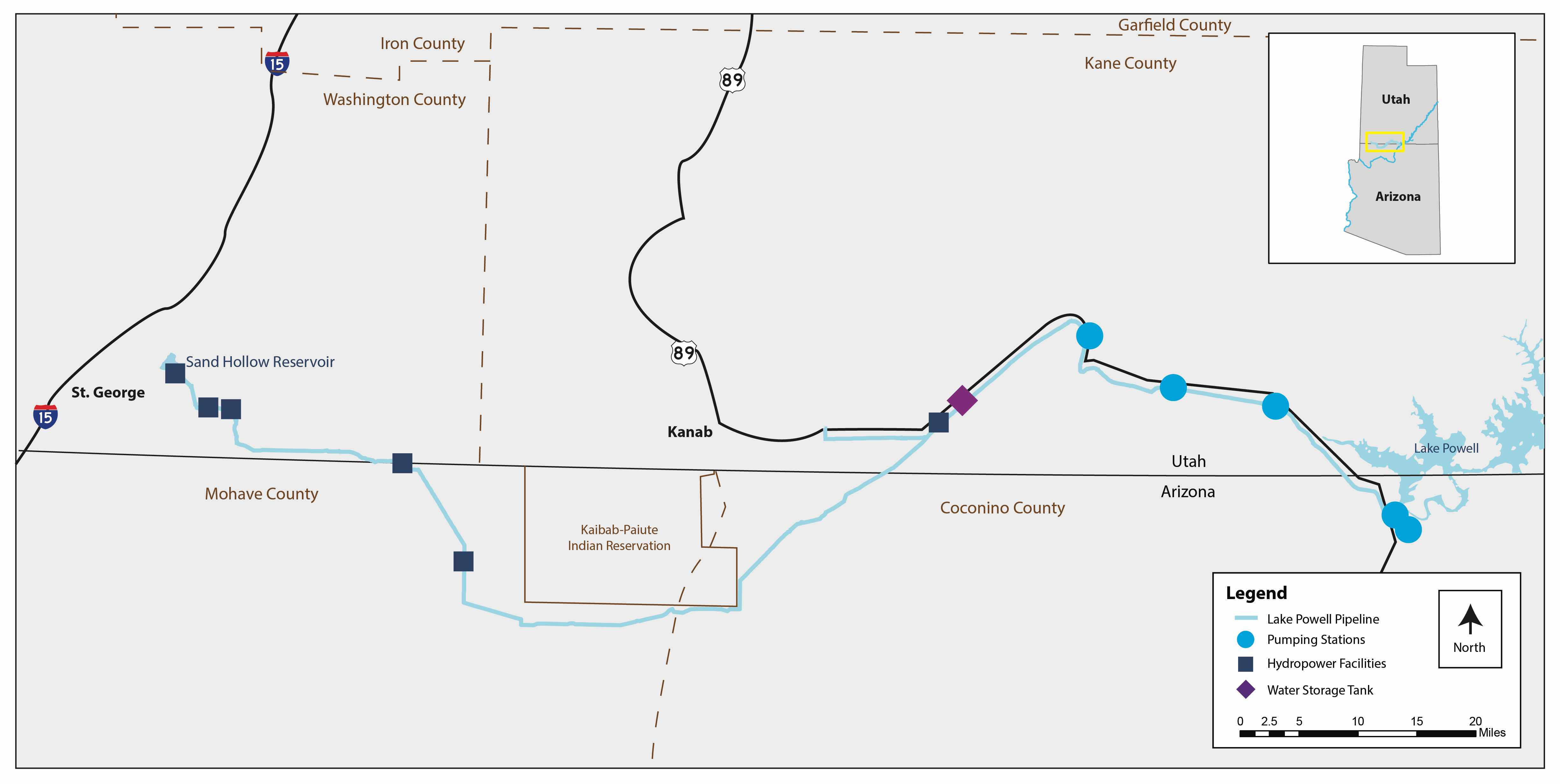
But environmentalists are raising concerns about the project and as planned the Lake Powell Pipeline would be expensive—early cost estimates are in the $1.1 billion to $1.8 billion range. If completed as proposed, the pipeline would be the largest state-funded water infrastructure project in Utah’s history, according to state officials.
Zach Renstrom, deputy general manager of the Washington County Water Conservancy District, cautioned that if the local population expands as expected in future years and the pipeline is not built, there will come a time when the water supply is effectively maxed out.
“If we don’t get the Lake Powell Pipeline, I’m going to have to go to the leaders of the cities here and just basically say ‘We’re done,’” he said. “Growth-wise.”
The pipeline is a state project. But the district, an independent agency that sells water wholesale to municipalities and others, is a central player and is slated to receive most of the water.
Renstrom said that stringent conservation measures would help to extend the time before a warning like what he described is necessary, but eventually “you get to a point where it’s just not safe.”
Pipeline opponents see things differently, arguing the project is both unwise and unneeded. They characterize the pipeline as a misguided waste of money that will tap a river system that is already overtaxed and that faces an uncertain future due to the changing climate.
Washington County can get by, these critics argue, by implementing more aggressive conservation measures than those currently in place and taking greater advantage of the water it has locally—claims that local leaders backing the project sharply contest.
Federal permitting for the pipeline is still underway and state lawmakers would need to take further action to approve financing before construction can begin. If and when the state breaks ground on the pipeline, it’s expected to take four to six years to build.
The pending project is notable in part because it is happening at a time when states around the west have coped with drought in recent years, and as climate change is creating increased uncertainty for the snowpack and rivers this part of the nation rely on heavily for water.
Debate over the pipeline also raises questions about how far states and localities should push restrictions on lawns and other conservation measures, whether allowing for rapid population growth in the desert makes sense, and who should get to have a say in such things.
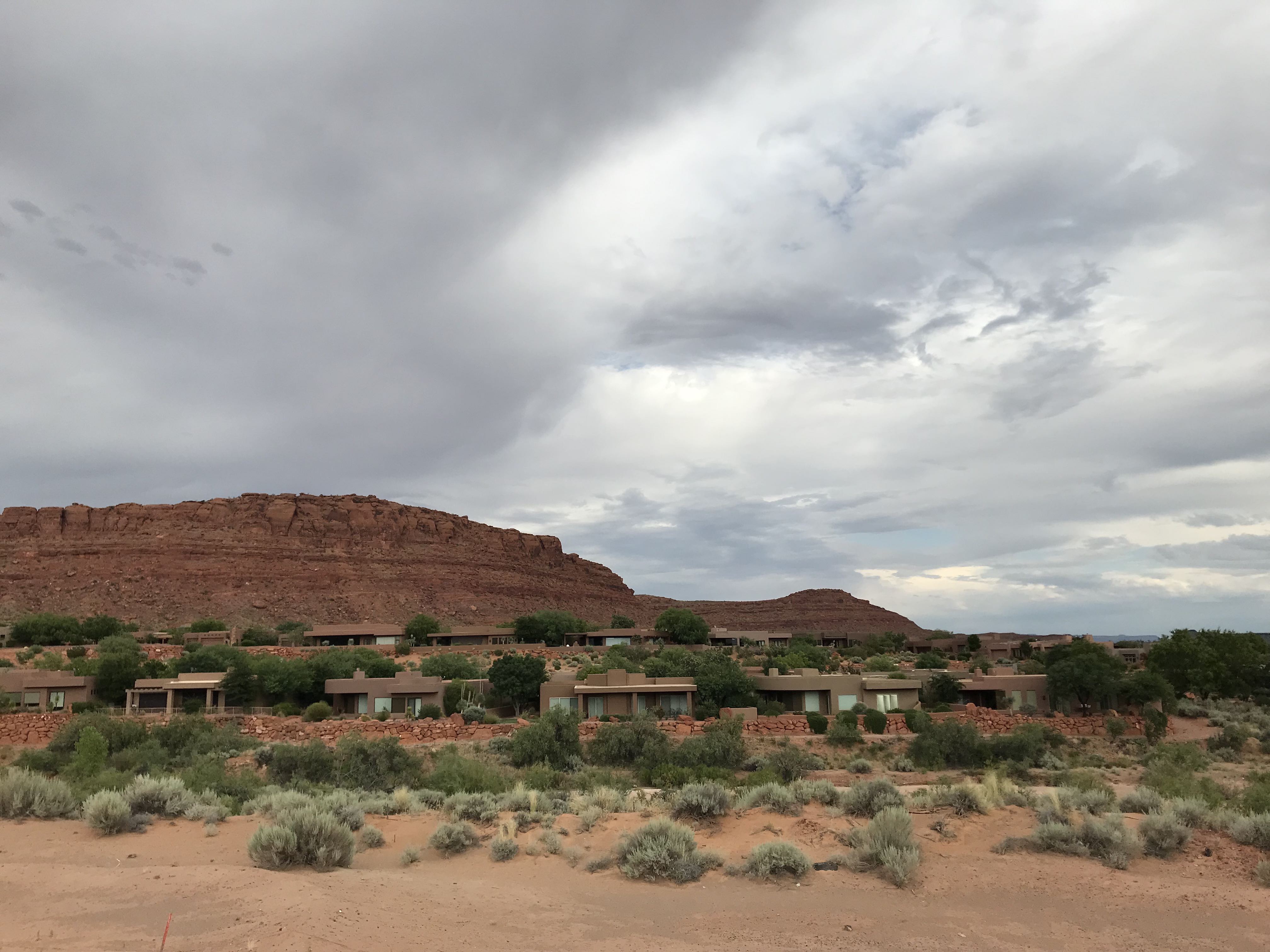
“It's a classic western water case study,” said John Berggren, a water policy analyst with the group Western Resource Advocates. “We have increasing demand, lots of population growth,” he added. “Some folks think it's a supply issue and you should develop more supplies.”
"Other folks, my organization included, think that you should focus more on the demand side, how do you reduce demand,” he added. “There are good arguments on both sides. It just kind of depends on where you put your weight and what you prioritize.”
‘The Most Secure Thing’
Supporters say building the Lake Powell Pipeline is vital to the region’s future.
They contend it would provide the St. George area with a redundant supply of water in addition to the Virgin River watershed, and that it would rely on water Utah has at its disposal under the complex rules that govern how states divvy flows from the Colorado River.
Constructing the pipeline, proponents say, will help to ensure that there will be ample water so that children growing up today in the St. George region will be able to stay there if they choose, and more people from outside the area can move there as well.
“We don’t just think that we grow at all costs, we’re really not trying to push growth, we’re trying to allow for growth,” said Pike, who is a pipeline supporter. “We can conserve our way through a lot,” he added. But what’s important to him about the pipeline, he said, “is we’re talking about another source of water.”
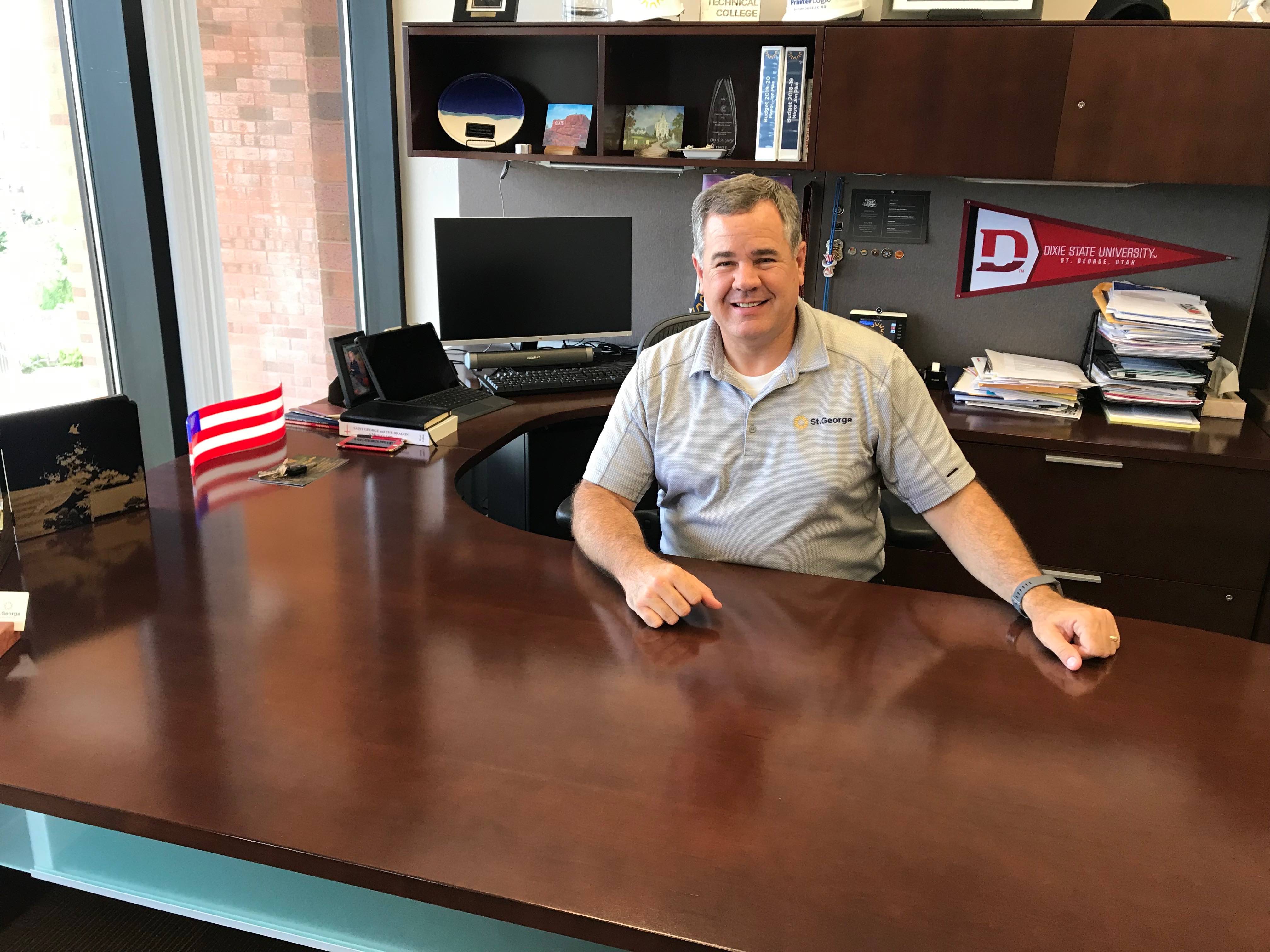
Mayor Chris Hart, of Ivins, a city of around 9,000 people located about nine miles northwest of St. George, echoed Pike's view. “For my city, I believe that the most secure thing going into the future is for this pipeline to be built,” he said. “There will be a secondary water source.”
Utah lawmakers passed legislation in 2006 that established a framework for the project, including an arrangement where the state would front the money for it, and then the localities receiving the water would repay that sum, with interest, over time.
Former Utah state Rep. David Clark, a Republican who used to represent a district in Washington County, was a chief sponsor of that bill. He said by phone recently that, while he’s astonished at the “glacial pace” of the permitting process, he still supports the pipeline.
“I think this will be an answer to future generations’ prayers,” he said.
‘Closer to The Edge’
Conserve Southwest Utah, an environmental advocacy group based in St. George, is one of the organizations that is opposed to the pipeline. “They’re doing such a poor job with the water they have now. If they just managed it better, they would have enough water for 500,000 people,” said Jane Whalen, a board member with the group.
One of Whalen’s main objections to the project is that, in her view, the state has not done enough to prove it will have the water in coming years to make the pipeline viable. “There’s no water for the Lake Powell Pipeline,” she said. “But they’re willing to spend billions on it.”

Whalen has detailed the risks she sees in a 35-page paper. In it she raises questions about whether the state will have the right to lay claim to all the water it plans to send through the pipeline and if depleted flows due to climate change and increased use along the Colorado will leave the river too sapped to support the project.
But state and local officials are adamant there will be enough water for the pipeline. “We believe that there is an adequate supply of water, even in the face of the climate change that appears to be happening,” said Eric Millis, the director of the Utah Division of Water Resources.
The Colorado River, which the pipeline would pull water from, is one of the most important waterways in North America. It provides water to about 40 million people and nearly 5.5 million acres of farmland across the western U.S. and Mexico, flowing over 1,400 miles.
Cities and farmers aren’t allowed to just take water from the river as they please. The Colorado’s flows are divided between seven states, including Utah, based on a raft of compacts, laws, court rulings and other guidelines known collectively as the “Law of the River.”
Heavy use of the river for irrigation, along with years of population growth and dry conditions have taken a toll on the Colorado.
The period from 2000 through 2018 was the driest 19-year timespan in over a century, and last year the combined storage of Lake Powell and Lake Mead, a large reservoir on the river east of Las Vegas, dropped to about 40%, the U.S. Bureau of Reclamation told Congress in March.
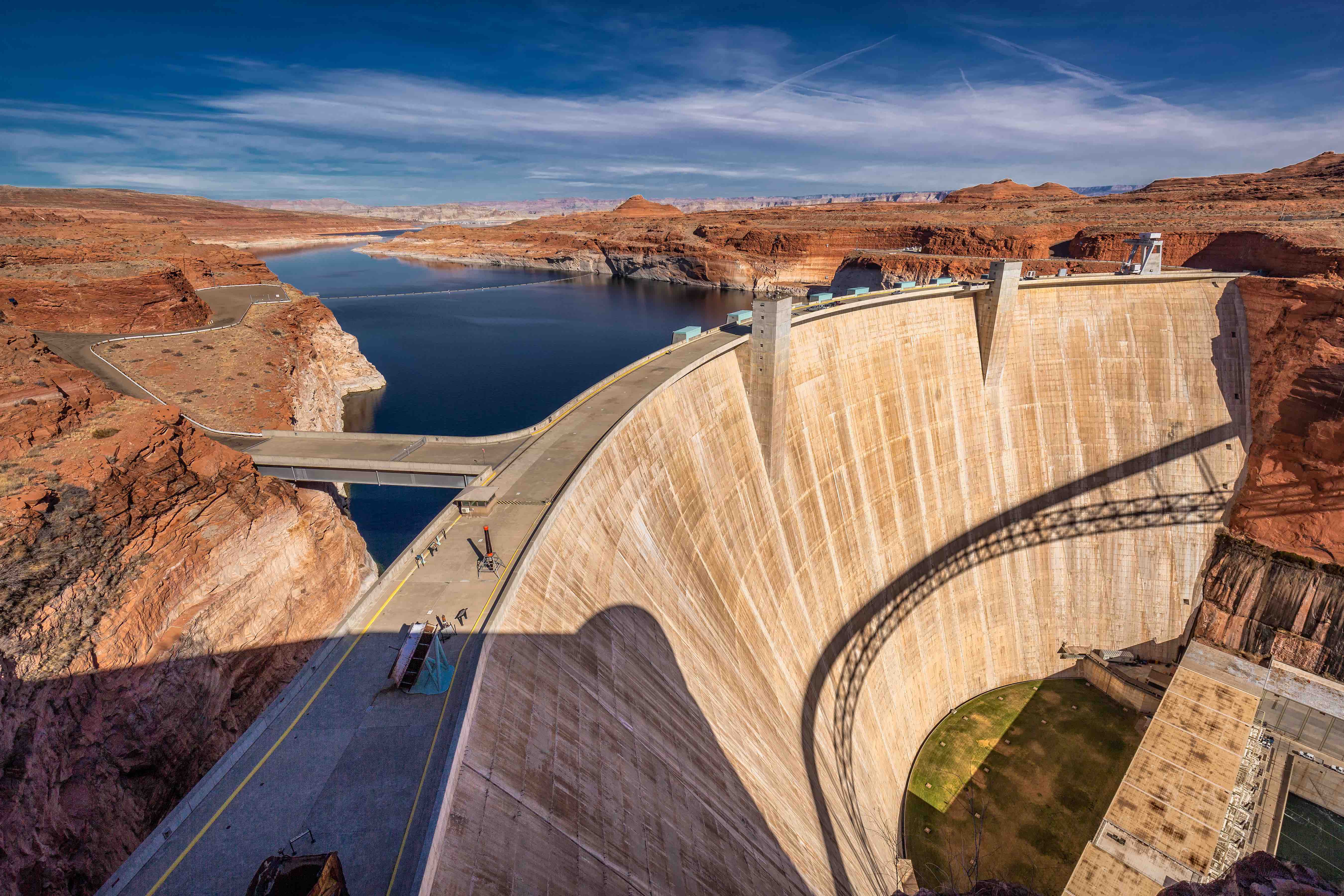
In May, the seven Colorado River states and federal officials signed a drought contingency plan that acknowledges the need to cut down on water use along the river in the years ahead.
But pipeline advocates say the use slated for the St. George region fits well within Utah’s Colorado River allotment and that until now, this and other water the state is entitled to has been flowing to the “lower basin,” which includes parts of Arizona, Nevada, and California.
“Utah, like any of the other states of the Colorado River basin, has a right to develop our Colorado River allocation,” Millis said.
Berggren, with Western Resource Advocates, said that while the state may be legally entitled to more water, the Lake Powell Pipeline threatens to further strain an already struggling river. “We already kind of reached that point where we’ve recognized pretty collectively as a basin that demand has exceeded available supplies,” he said.
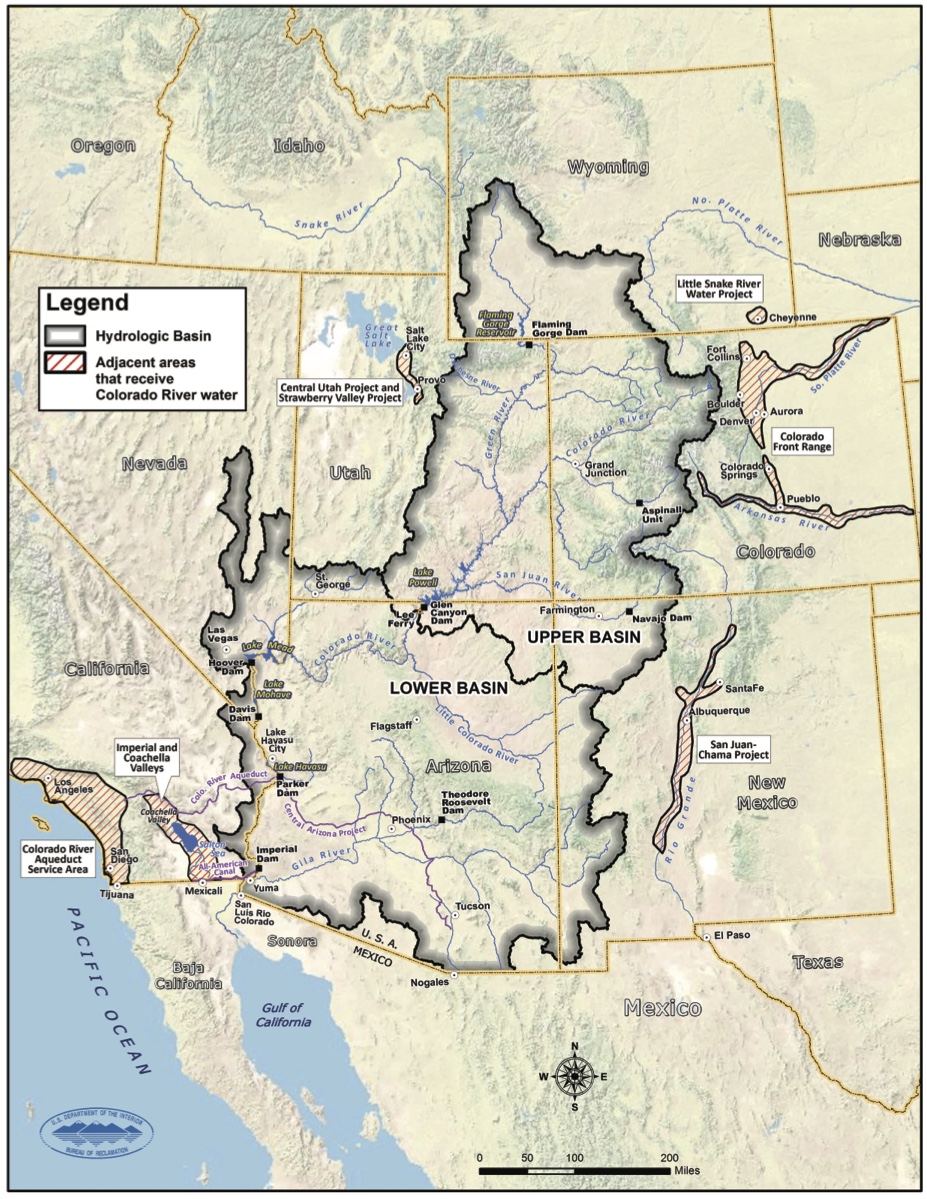
Utah and other states that sit within the Colorado River’s upper basin are required to deliver 75 million acre feet of the river’s water on a 10-year rolling average to lower basin states. Between 2008 and 2017, these flows surpassed that amount by 17 million acre-feet.
In that context, plans to divert up to 86,249 acre-feet annually for the Lake Powell Pipeline may seem marginal. But Berggren says that’s not so. “Every new diversion now, or in the future, brings the whole system closer to the edge,” he said.
“We are using every drop of this river," he added.
‘We Had One Stoplight’
St. George is located about 120 miles northwest from Las Vegas. The region has agricultural roots, with the early Mormon settlers in the 1800s growing cotton. Later farmers switched to other crops and livestock, but for decades the area was far from booming.
“In the 1950s we had one stoplight here in town,” said George Cannon, a St. George resident, who is active in the county historical society.
But as the fifties passed, the rise of air conditioning and the construction of better roadways helped to pave the way for growth. Tourism caught on, motels sprang up and as the years went by, more people moved in.
“It was really in the early eighties that we started to grow beyond what we’d been,” Hart, the Ivins mayor, said of his city.
Hart, who has developed residential property in the area himself, described how the hardscrabble farming community gradually transformed as real estate developers launched projects, which included retirement communities.
“Folks began to notice this place,” he said.
There’s still some farming around. But more and more agriculture is getting displaced by residential real estate and other development. “We’re slowly emerging now into a resort destination,” Hart noted. “We have two major resort developments that are underway.”
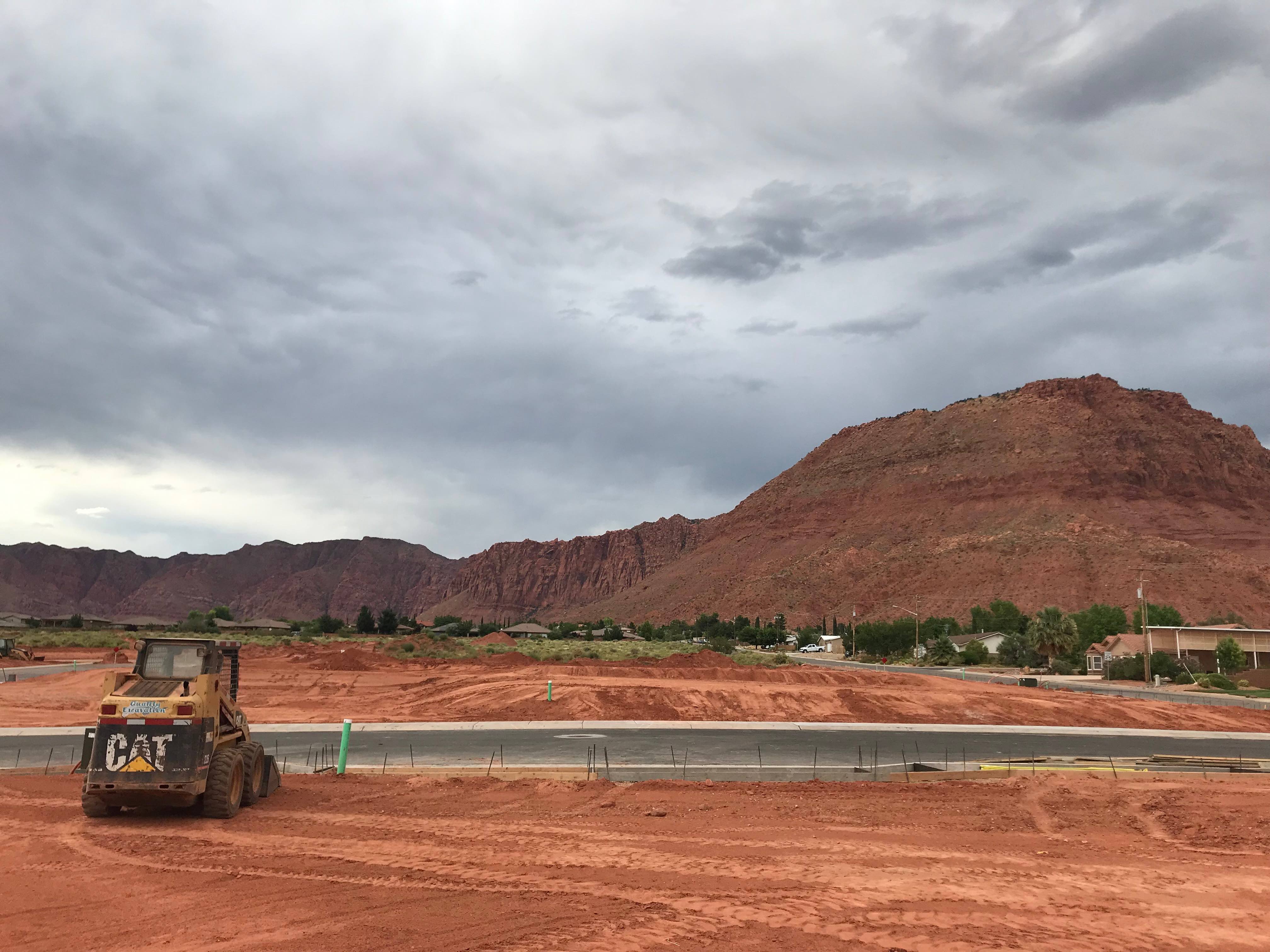
Estimates from the University of Utah show the county’s population ballooning to 391,000 people by 2050 from around 171,000 residents today. The St. George metro region was the third-fastest growing in the U.S. from 2017 to 2018, based on U.S. Census Bureau figures.
Along with population growth, tourism is a factor when considering the local water supply. Zion National Park alone, which is located in the eastern reaches of the county, drew 4.3 million people last year, compared to just 2.3 million two decades earlier.
Pike explained that St. George is seeking ways to diversify its economy beyond sectors like tourism and home-building, into fields like light manufacturing and biotechnology.
“We’re not going to do that if we don’t have the most basic human need, which is water,” the mayor said.
An Unpredictable River
The Virgin River is fed by melting snowpack, with its north and east forks carving through Zion National Park. The river helps fill reservoirs near St. George, winds its way through town, and then carries on into Arizona and Nevada, eventually spilling into a northern arm of Lake Mead.
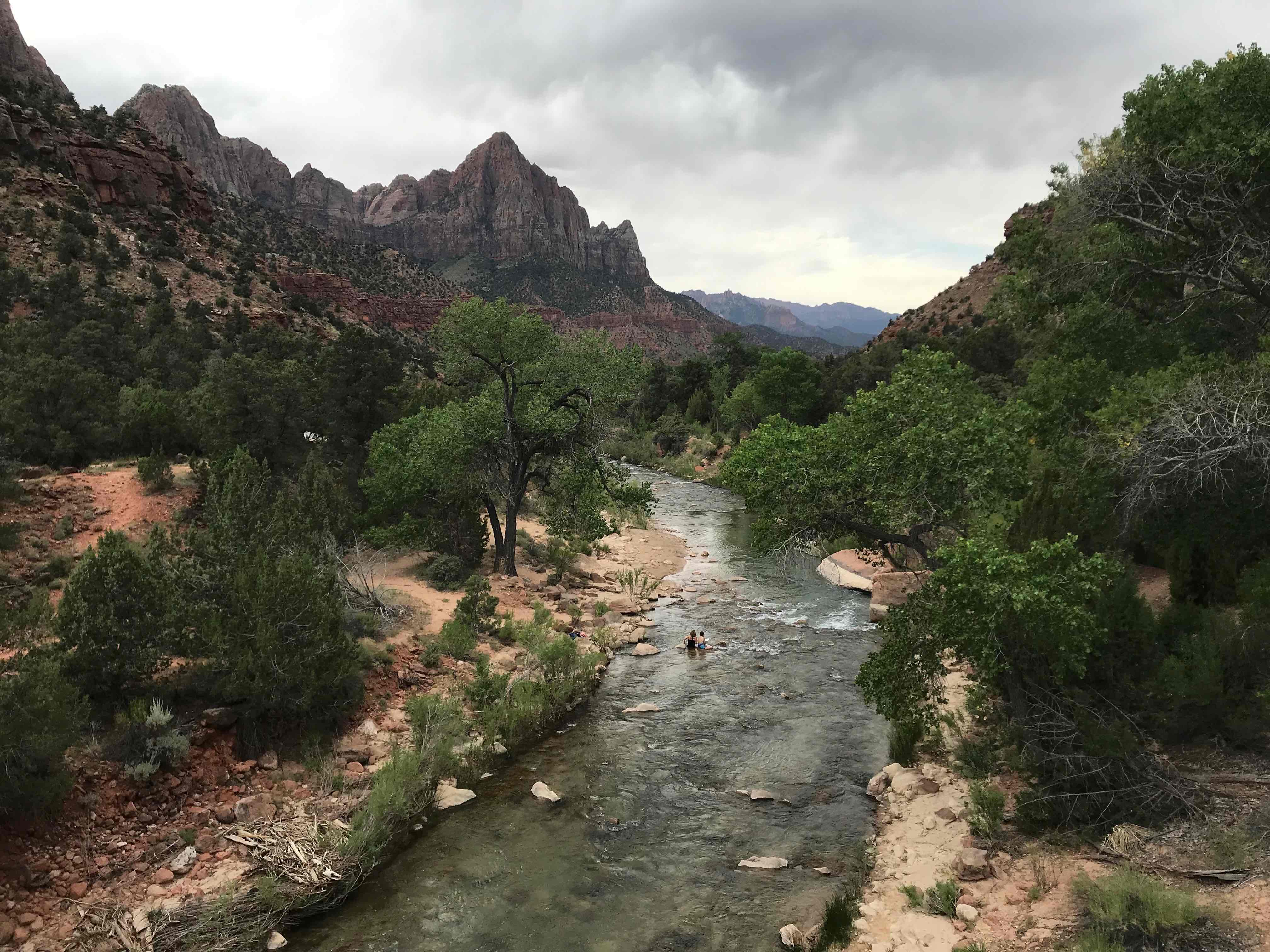
Renstrom describes the river and its tributaries as somewhat fickle, and prone to boom and bust flows. There was more water available this year than the district could capture and store. “We had a great year,” he said. “But really a lot of that water just flowed down to Lake Mead.” The river system isn’t always so giving though.
“Last year was just horrible,” Renstrom said.
Options for storing water when it’s more bountiful are limited by a number of factors, according to the district.
Its infrastructure can’t handle the debris-laden flows that come with heavy rains, so the agency normally opts to open its floodgates and let that water flow downriver. Issues with the local terrain and endangered species pose obstacles when considering new reservoirs.

“This whole community has kind of been based on this single source that has large variabilities,” Renstrom said. “You throw climate change into that mix, and it makes me very nervous.”
This is a big part of the reason why Renstrom, like other pipeline supporters, says the project is so necessary. “The Colorado River is the most reliable water source in the western United States for the desert,” he said. “To me, that’s a huge factor, to have that second source.”
‘Cows Don’t Drink It’
There is water in Washington County that the district doesn’t currently use. For instance, some pipeline critics argue that supporters are ignoring supplies that will become available as more farmland is converted into residential and commercial real estate.
Citing U.S. Geological Survey figures for 2015, they say farms and ranches used about half of the water in Washington County.
But Renstrom counters that “it’s just not as simple as saying ‘There’s a field, dry it up.’”
While this agricultural water may be acceptable for, say, irrigating alfalfa, that doesn’t mean that it’s potable. In fact, Renstrom described much of the county’s agricultural water as “really nasty” and said it would be costly for the district to treat to a level for household use.
“Cows don’t drink it,” he said.
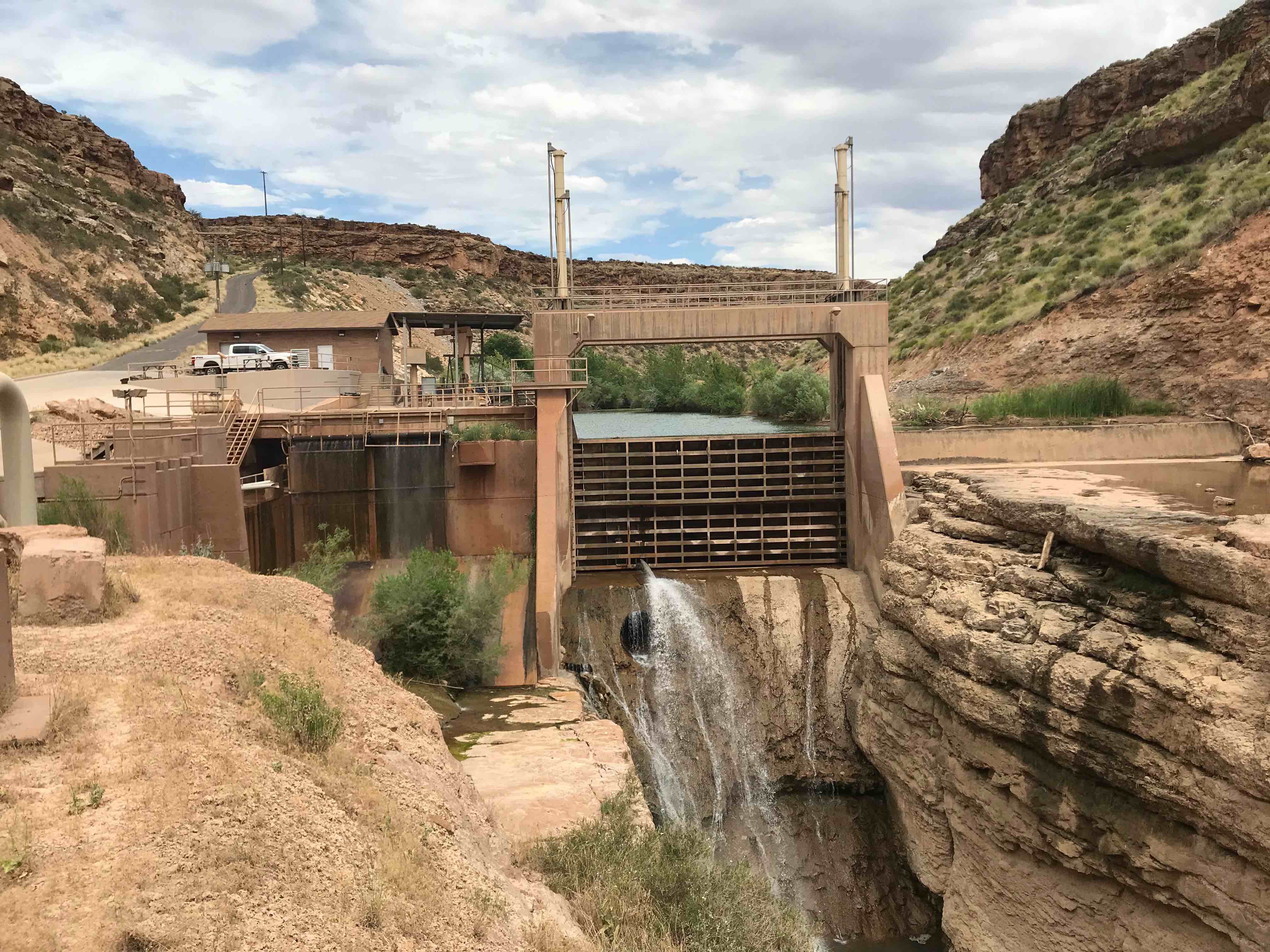
There are other complications with turning to agricultural water as well. Farmers own “rights” to set amounts of water and the district’s policy is to only buy them from willing sellers.
Under the system that commonly governs water rights around the west, rights holders with older or more “senior” rights are given priority and, as a result, in dry years “junior” water rights holders can see their water cut-off. Renstrom said that’s not compatible with providing municipal water. “I have to design a water system where I know for certain that water is there,” he said.
There is groundwater in Washington County as well. But this, too, can be low grade and brackish. The district’s position is that developing reverse osmosis facilities and other infrastructure to take greater advantage of poorer quality water like this would be expensive, while the amount of water this would yield would be relatively small.
Renstrom insists he’s kept an open mind about ways the county might bolster its water sources and meet its future supply needs, but when he weighs the costs and benefits, the pipeline makes the most sense.
“As government employees to take on this big, huge project, if there wasn’t a true need for it, do you think we’d do it?” he added. “If there was a way to not build the project, if there was another alternative, I’d be the very first person to say ‘please come and introduce this.’”
Why Not Limit Growth?
Renstrom also stressed that it’s not up to the district to impose policies—steep rate or fee hikes for example—aimed at slowing real estate development, or the influx of people to the county.
“Our purpose is to basically make sure that there’s a clean, reliable source of drinking water,” he said. “It’s not my job, and it shouldn’t be my job, to make an arbitrary ceiling to growth.”
But what about the municipalities? If there are concerns about the adequacy of the water supply in future years, could city leaders decide to pull levers, with land use and zoning regulations, or with issuing building permits, that might apply the brakes?

Pike, the St. George mayor, shunned the idea—at least in the near term. “It’s just simply un-American,” he said. “There are lots of places in this country that have insufficient water without piping, without treating, without continually looking for other sources.”
“Is anyone telling Las Vegas: ‘stop growing’?” he added.
That said, without a new water supply like the pipeline, or significant conservation measures, Pike suggested that in 10 years or so it wouldn’t be inconceivable that St. George and other cities in the county would be forced to consider steps like limiting building permits, or telling developers to bring in their own water.
Hart offered a similar assessment. If the pipeline falls through, the county could seek to develop other sources of water and reduce use, some continued growth would likely be possible, he said. But, he added, “there’s likely going to be a point at which we’d have to say ‘Okay, no more land development.’”
“It’s kind of hard to put a stop to that even if you want to," the Ivins mayor noted.
He also warned that “if the decision was made that we were simply going to close the doors,” it could have harsh consequences for the local economy, given how many people in the county work in growth-related fields like construction and banking.
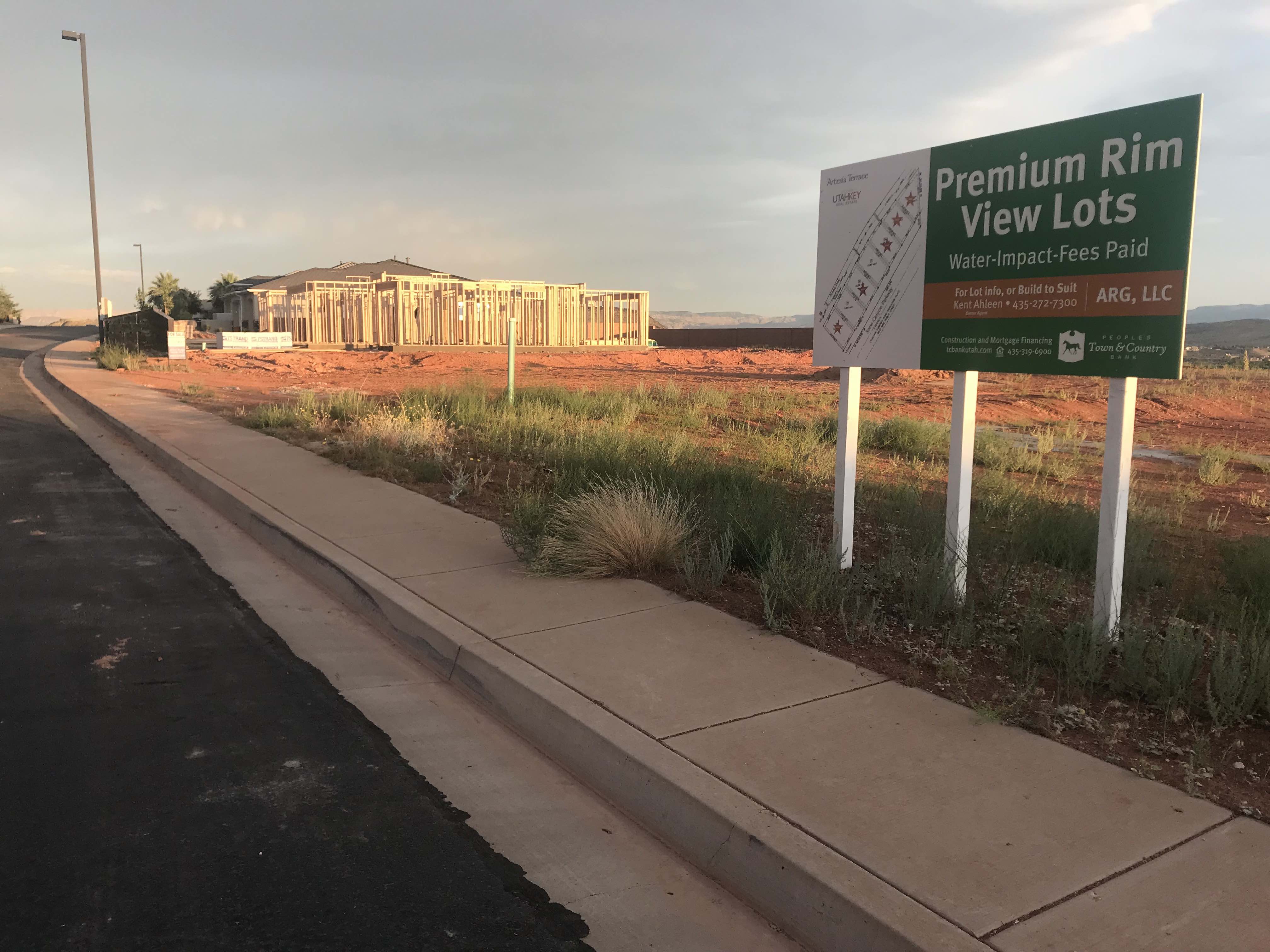
A notable element with the plan to pay for the pipeline that Pike highlighted is that about 75% of the anticipated cost for the district to repay the state would come from “impact fees” levied on new construction. The other 25% would come from a mix of water rates and property taxes. The idea here is that growth is paying for growth.
“At least the bulk of it,” Pike said.
‘Too Much Grass’
One of the more contentious parts of the debate over the pipeline centers on whether Washington County is doing enough to save water. The Utah Rivers Council, which is opposed to the project, brands residents there as some of the nation’s “highest water users.”
The water conservancy district refutes this claim, and says that comparisons like this are often unfair because public water utilities in Utah track water usage differently than other places, including neighboring cities like Albuquerque and Las Vegas.
Metrics can be further skewed, the district says, because tourists and second homeowners drive up use but aren’t always accounted for when calculating per capita statistics.
Pipeline boosters and skeptics have long-clashed over these and other figures. The district likes to highlight that county water use declined by about 30% between 2000 and 2015.
The mayors of St. George and Ivins both say they are committed to conservation programs, and rattle off examples of how their cities and land developers are taking steps to conserve water.
Pike said that where it’s possible St. George uses treated and reused wastewater to water lawns at parks, playfields and cemeteries, and he notes that the city in June regularly passes a resolution asking people to water their grass between 8 p.m. and 8 a.m., when it’s cooler.
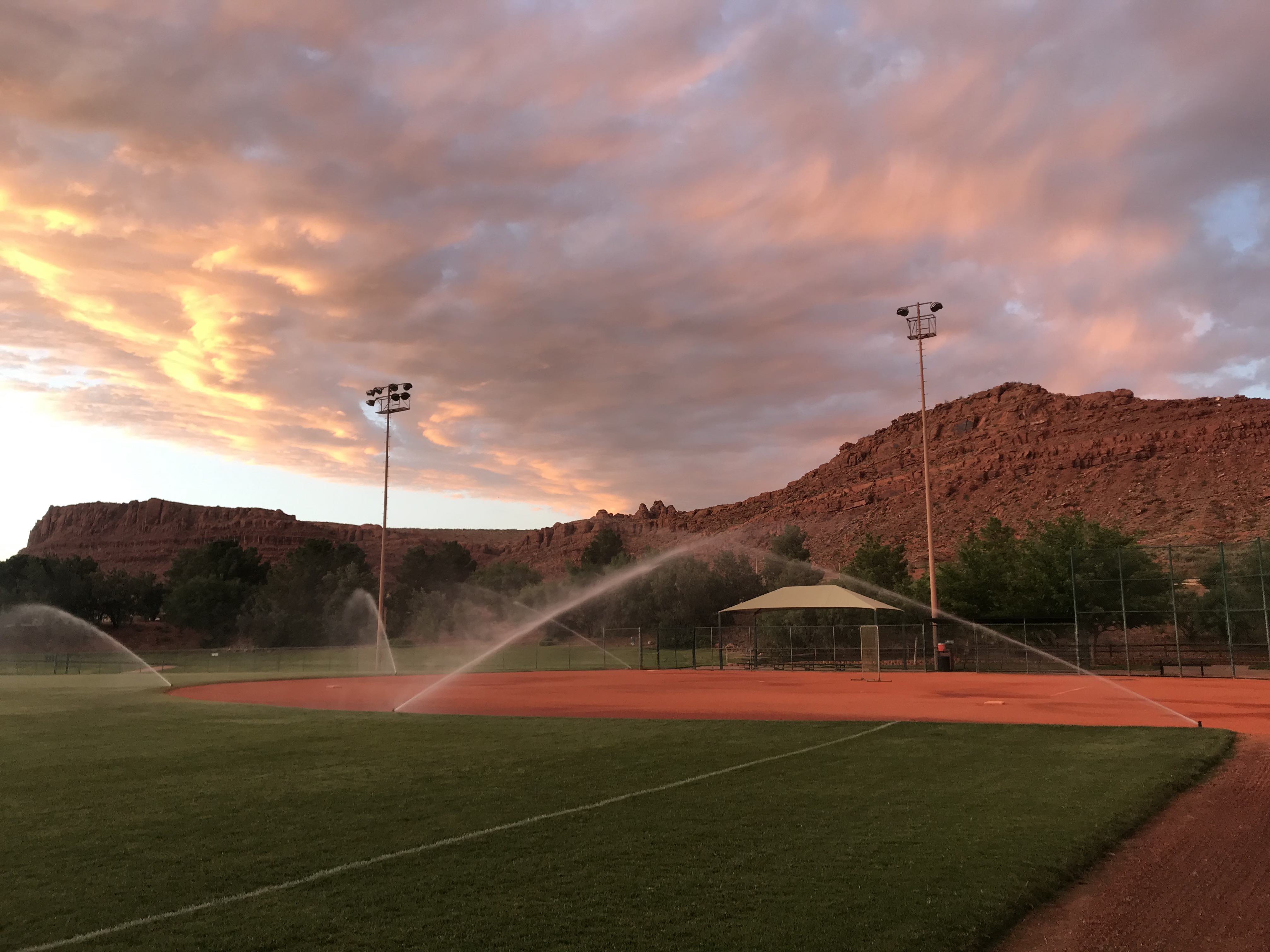
The city does operate and maintain four golf courses. “More golf courses per capita than we need,” Pike said. But he added that the city’s water manager challenged the golf director to cut water use by 25%. “They’re doing it,” he said.
Pike also pointed out a residential development in the works that will occupy about 3,400 acres, where 25,000 or 30,000 people may one day live, and said there are plans for a system at that site that will use a mix of brackish and reused water for outdoor watering.
“I wish we had that everywhere,” he said. "We don’t, and we probably won’t.”
“We’re going to need to conserve more water and we’re going to need to find more water,” the mayor added.
When asked about the biggest shortcomings she sees on the local water conservation front, Whalen, with Conserve Southwest Utah, said it's a lack of desert landscaping and "too much grass." She also said water rates aren’t high enough, allowing people to water lawns too liberally.
Local officials, Whalen added, tend to jump to extremes when talking about the potential consequences for peoples’ yards if the pipeline does not get built, suggesting they’ll have to rip up their lawns and give up their trees. “It’s this propaganda,” Whalen said.
Hart said that local real estate developers and others have “gotten the message” that they need to be leaning more toward desert landscaping and drought tolerant plants, rather than yards full of plush grass. But he also has an aversion to taking too hard a line on residential lawns.
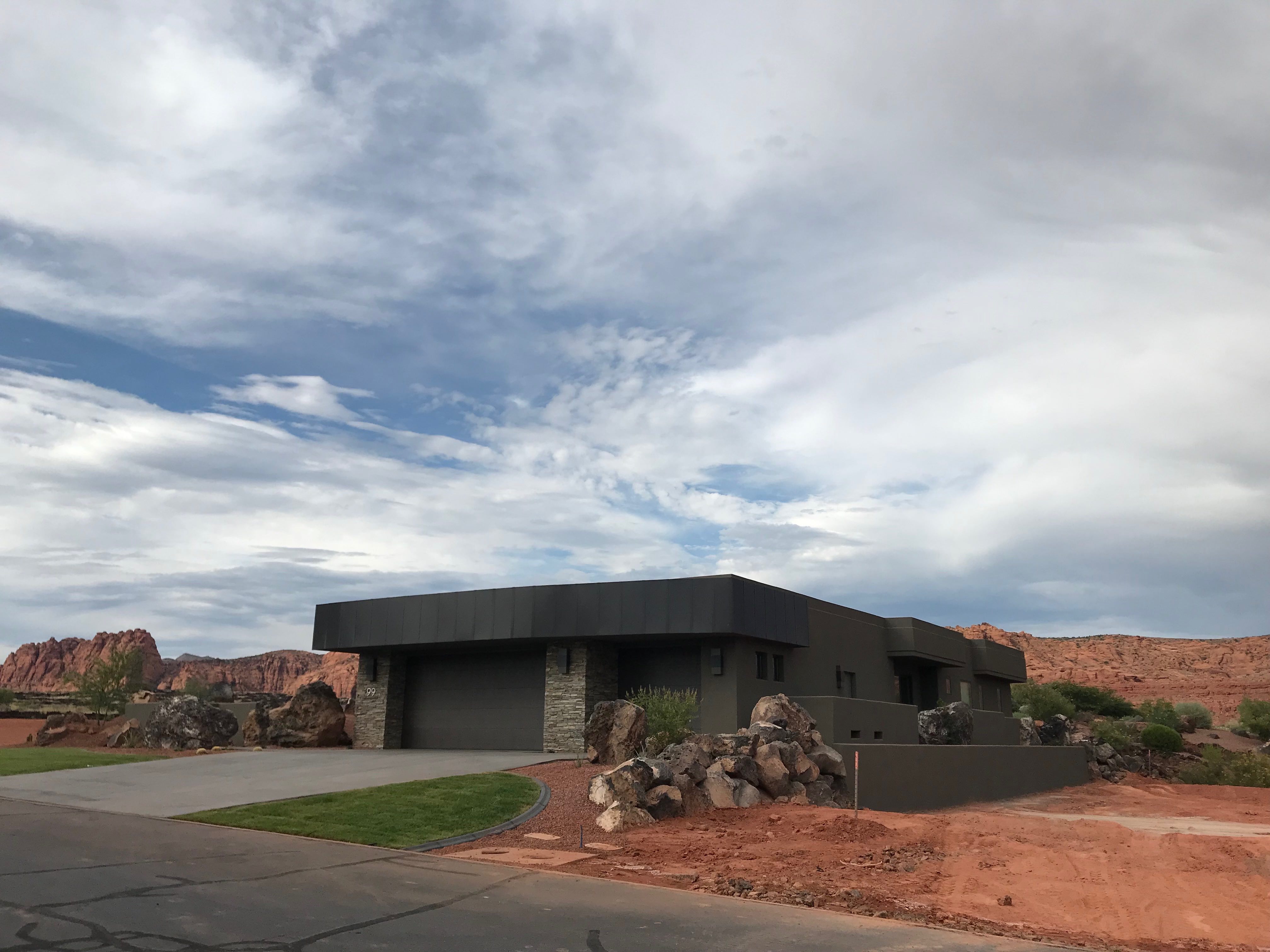
He defended the grass behind his own house, saying that his grandkids play there when they visit, and said if local politicians implement conservation measures seen as overly austere, they’re apt to be booted out of office and replaced by candidates who will overturn the policies.
“As a mayor, I’m not going to tell a young family they can’t have a little piece of lawn,” he said. “People need to go stick their toes in the grass someplace every once in awhile. It’s grounding.”
‘You’re Able to Get By’
Western Resource Advocates put forward a blueprint called the Local Waters Alternative that proposes how Washington County might meet its water needs in the decades ahead, without the pipeline, while taking on fewer risks and lower costs than the project poses.
This plan would involve ramping up water conservation measures, while also reusing water, repurposing agricultural water, and restructuring rates so that they are higher for heavier users.
The district has analyzed this plan and concluded it is flawed and would not provide the county with adequate water through 2060.
But this assessment doesn’t necessarily jibe with what Western Resource Advocates has seen elsewhere.
“If there’s one thing we’ve learned in the last 30 years it’s that communities in the west can continue to grow and thrive and have really healthy economies without increasing their overall water demand,” Berggren said. “There’s countless examples.”
“You’re able to get by without these huge, really expensive supply projects,” he added.
Clark, the lawmaker who sponsored the 2006 pipeline bill, bristles at some of the pushback over the project. “It really galls me when people outside of the state, or outside of Washington County,” he said, “decide what they think is best for us, how to live our lives.”
He stressed that, in his view at least, the county is "frugal" with its water and has made important strides toward conserving it. “We understand we live in a desert," Clark said.
Bill Lucia is a Senior Reporter for Route Fifty and is based in Olympia, Washington.
NEXT STORY: States flubbed the rollout of their health insurance exchanges. Now they’re ready to try again.






